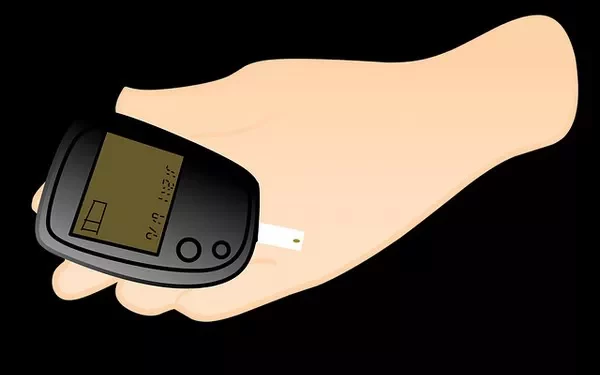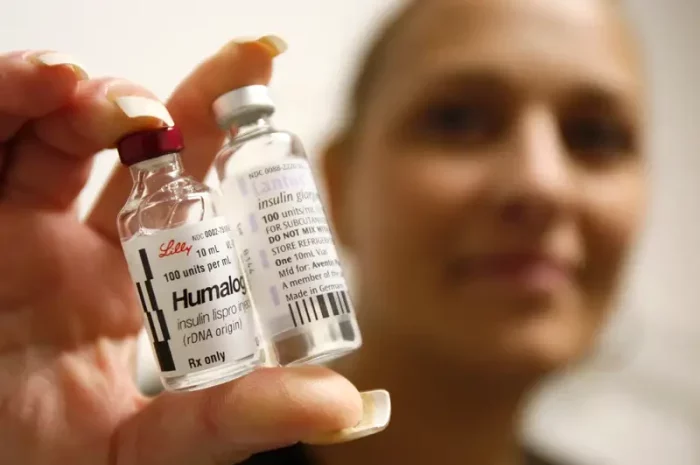Blood sugar levels fluctuate throughout the day and night, influenced by food intake, physical activity, medications, and hormonal changes. Monitoring nocturnal blood glucose is crucial for people with diabetes, as it can help prevent complications such as nighttime hypoglycemia or morning hyperglycemia. Maintaining a stable blood sugar level at night is essential for ensuring overall health and minimizing the risk of diabetes-related complications.
This article will explore what constitutes a normal blood sugar level at night, the factors that influence nocturnal glucose patterns, and practical tips for managing nighttime blood sugar effectively.
Defining Normal Blood Sugar Levels at Night
General Guidelines for Normal Blood Glucose
The target blood sugar range for people with diabetes can vary based on individual health goals and recommendations from healthcare providers. However, general guidelines for normal blood sugar levels at night fall within the following ranges:
Before bed: Blood sugar levels should typically be between 90-180 mg/dL (5.0-10.0 mmol/L). This range helps ensure stable glucose levels during sleep without the risk of hypoglycemia.
During the night (overnight): For most individuals with diabetes, blood sugar levels should ideally remain between 90-150 mg/dL (5.0-8.3 mmol/L) while sleeping. Maintaining this range minimizes the risk of nighttime hypoglycemia (low blood sugar) and ensures a smoother transition into the morning.
Upon waking (fasting blood glucose): Blood sugar levels should generally be between 70-130 mg/dL (3.9-7.2 mmol/L) upon waking. The goal is to avoid both hypoglycemia and hyperglycemia (high blood sugar) during the fasting period of sleep.
It is important to note that target blood glucose levels can differ based on age, health status, diabetes type, and other factors. Therefore, it is essential for individuals to work closely with their healthcare providers to establish personalized blood sugar targets.
Why Monitoring Nighttime Blood Sugar Is Crucial
Avoiding Nocturnal Hypoglycemia
Hypoglycemia, or low blood sugar, is a condition that can occur when blood glucose drops below 70 mg/dL (3.9 mmol/L). Nocturnal hypoglycemia occurs during sleep and can be particularly dangerous because its symptoms may go unnoticed. If left untreated, nocturnal hypoglycemia can lead to severe outcomes, including seizures, loss of consciousness, and even death.
For people with diabetes, nocturnal hypoglycemia is often caused by factors such as:
Excessive insulin or medication: Taking too much insulin or certain diabetes medications, particularly in the evening or at bedtime, can result in blood sugar levels dropping too low during the night.
Skipping or delaying meals: Skipping dinner or bedtime snacks can lead to low blood sugar levels overnight, particularly for individuals who use insulin or other glucose-lowering medications.
Increased physical activity: Exercising late in the day can increase insulin sensitivity, which may result in lower blood sugar levels during the night.
Alcohol consumption: Drinking alcohol, especially in the evening, can lower blood sugar levels and increase the risk of nocturnal hypoglycemia.
The Somogyi Effect and Morning Hyperglycemia
Some people with diabetes may experience a phenomenon known as the Somogyi effect, also called rebound hyperglycemia. This occurs when the body overcompensates for low blood sugar levels during the night by releasing stress hormones such as cortisol, glucagon, and epinephrine. These hormones raise blood sugar levels in an attempt to correct the hypoglycemia, but they may cause blood glucose to spike too high by the time the person wakes up.
The Somogyi effect can lead to a cycle of nighttime hypoglycemia followed by morning hyperglycemia, making it challenging to maintain stable blood sugar levels. Recognizing this pattern is important, as it may require adjustments to insulin or medication regimens.
The Dawn Phenomenon
Another common cause of elevated blood sugar in the morning is the dawn phenomenon. Unlike the Somogyi effect, which results from a reaction to low blood sugar, the dawn phenomenon occurs due to natural hormonal changes during the early morning hours. Between 3:00 AM and 8:00 AM, the body releases hormones such as growth hormone, cortisol, and glucagon, which signal the liver to release stored glucose into the bloodstream. This hormonal surge can lead to elevated fasting blood glucose levels upon waking, even if blood sugar levels were within range during the night.
For individuals with diabetes, the dawn phenomenon can complicate blood sugar management and may require specific strategies to address elevated morning blood glucose levels.
Factors Influencing Nighttime Blood Sugar Levels
Several factors can impact blood sugar levels during the night, making it essential to consider them when managing nocturnal glucose levels.
Type and Timing of Food Intake
The type of food consumed in the evening or at bedtime can significantly influence blood sugar levels at night. Carbohydrates, particularly simple or refined carbohydrates, are rapidly digested and absorbed, causing a quick spike in blood glucose levels. On the other hand, complex carbohydrates paired with protein or fat can slow the absorption of glucose, leading to more stable blood sugar levels throughout the night.
Some people with diabetes find that eating a balanced meal with a combination of protein, healthy fats, and complex carbohydrates in the evening helps prevent blood sugar fluctuations during sleep. A small bedtime snack that contains protein and complex carbohydrates may also help maintain stable glucose levels overnight, particularly for those who are at risk of nocturnal hypoglycemia.
Insulin and Medication Regimens
Insulin therapy and oral diabetes medications play a critical role in managing blood sugar levels, including nighttime glucose control. For individuals who use insulin, the timing, type, and dosage of insulin can have a direct impact on nocturnal blood sugar levels.
Long-acting or basal insulin: Basal insulin provides a steady release of insulin throughout the night, helping to maintain stable blood glucose levels. Adjusting the dosage or timing of basal insulin may be necessary to prevent overnight highs or lows.
Short-acting or bolus insulin: For individuals who use bolus insulin to cover meals, the timing of evening insulin injections should align with food intake to avoid mismatches between insulin action and glucose absorption.
Oral diabetes medications: Certain oral medications, such as sulfonylureas, can increase the risk of nighttime hypoglycemia. Adjustments to medication timing or dosage may be required to minimize this risk.
Working with a healthcare provider to fine-tune insulin or medication regimens can help ensure more stable nocturnal blood glucose levels.
Physical Activity
Exercise can have a profound effect on blood sugar levels, often lowering them by increasing insulin sensitivity and promoting glucose uptake by muscles. However, the timing of exercise is important when it comes to nocturnal blood sugar control. Vigorous physical activity late in the evening or close to bedtime can result in lower blood sugar levels overnight, increasing the risk of nocturnal hypoglycemia.
Individuals with diabetes should be mindful of their activity levels in the evening and may need to adjust their insulin, medication, or food intake accordingly to prevent nighttime blood sugar lows.
Hormonal Fluctuations
As mentioned earlier, natural hormonal fluctuations can have a significant impact on blood sugar levels during the night. The release of stress hormones such as cortisol and growth hormone during the early morning hours can lead to the dawn phenomenon, causing elevated blood sugar levels upon waking.
Understanding these hormonal patterns and how they affect nocturnal blood glucose is essential for effective diabetes management. In some cases, adjustments to insulin or medication regimens may be needed to counteract the effects of these hormonal surges.
Strategies for Managing Nighttime Blood Sugar
Consistent Blood Sugar Monitoring
Regular blood sugar monitoring is one of the most important strategies for managing nighttime blood glucose levels. By checking blood sugar levels before bed, during the night (if necessary), and upon waking, individuals with diabetes can gain insight into their nocturnal glucose patterns and identify any trends or issues that need to be addressed.
Continuous Glucose Monitoring (CGM): Continuous glucose monitoring (CGM) systems are highly beneficial for tracking blood sugar levels throughout the night. CGMs provide real-time data on glucose levels and trends, alerting individuals to potential hypoglycemia or hyperglycemia before it becomes problematic. For those who experience nocturnal blood sugar fluctuations, CGMs can be a valuable tool for improving glucose control.
Fingerstick Testing: For individuals who do not use CGM, regular fingerstick testing can still provide important information about nighttime blood glucose. Testing before bed, during the night (if hypoglycemia is suspected), and first thing in the morning can help identify patterns that require intervention.
Bedtime Snack Choices
For some people with diabetes, eating a small bedtime snack can help prevent nocturnal hypoglycemia. The key is choosing a snack that provides a slow and steady release of glucose without causing a significant spike in blood sugar levels. Good options for bedtime snacks include:
- A small apple with peanut butter
- A handful of nuts with whole-grain crackers
- Greek yogurt with berries
- A slice of whole-grain toast with avocado
These snacks provide a balance of carbohydrates, protein, and healthy fats, helping to stabilize blood sugar levels throughout the night.
Adjusting Insulin or Medication Regimens
If nocturnal blood sugar patterns show consistent lows or highs, adjustments to insulin or medication regimens may be necessary. This could involve changing the timing or dosage of long-acting insulin, adding a small dose of insulin to counteract the dawn phenomenon, or adjusting the timing of oral medications.
Working closely with a healthcare provider to make these adjustments is critical for ensuring safe and effective blood sugar control.
See also: What Is a Normal Sugar Range?
Conclusion: Achieving Stable Blood Sugar at Night
Maintaining normal blood sugar levels at night is essential for overall diabetes management and long-term health. By understanding the factors that influence nocturnal blood glucose patterns and implementing strategies to manage them, individuals with diabetes can reduce the risk of complications and improve their quality of life. Consistent blood sugar monitoring, thoughtful dietary choices, and personalized insulin or medication regimens are key components of successful nighttime blood sugar management.
Related topics:
What is the Normal Sugar Test?

























